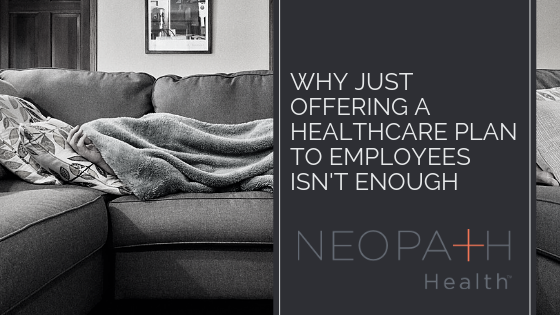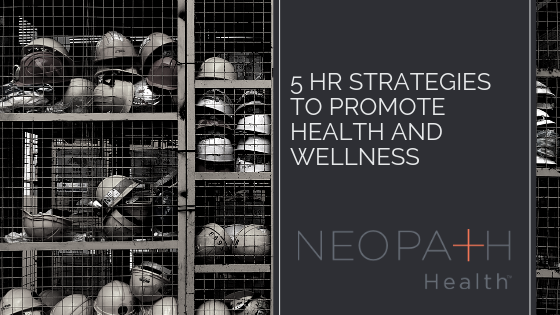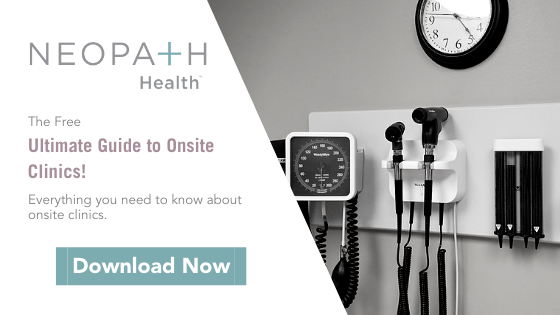NeoPath Health is committed to reducing health disparities for tribal communities by working with tribes to implement managed onsite and near-site clinics. NeoPath’s onsite clinics provide culturally-sensitive health and wellness services with pharmacy, lab, imaging, acute care, and primary care all located onsite.
Joe McErlane
Recent Posts
Topics: Onsite Clinics, Tribal Health
How Onsite Clinics Support More Than the Health of Your Tribe
Onsite clinics are gaining popularity in tribal communities because they improve a tribe’s access to healthcare, which may lead to a healthier community. These clinics are located on or near tribal land to bring pharmacy, lab, imaging, acute care, and primary care to the community. A patient’s cost for these services is often covered by the tribe, further reducing the barrier to accessing care.
Topics: Onsite Clinics, Tribal Health
3 Ways to Assess the Healthcare Needs of Your Tribe
Tribal communities face daunting health disparities. According to the Indian Health Service (IHS), life expectancy is 5.5 years lower for American Indian and Alaska Natives compared to the U.S. population. Tribal communities also face higher mortality rates for numerous diseases, including heart disease, diabetes, chronic liver disease and cirrhosis, and stroke.
Topics: Onsite Clinics, Tribal Health
How much does corporate health care cost?
Next to wages, your organization will spend more on healthcare costs than nearly any other expense this year. In fact, the Society for Human Resources Management predicts that employers will shell out as much as $15,000 per year per employee for healthcare premiums in 2019. That comes to $15 million a year for every one thousand employees. In an organization paying an average annual salary of $40,000, employers can expect to pay 137% of that salary when they include the cost of healthcare - and even more when they consider the other expenses associated with a new hire.
Topics: Corporate Healthcare Costs
4 Reasons Why Corporate Healthcare Costs are Rising
According to 2018 research conducted by The Kaiser Family Foundation, employers contribute an average of $14,069 per year, per employee for family health insurance coverage. This has increased by a surprising 50% since 2010, when the average employer contribution to a family plan was $9,325.
Topics: Corporate Healthcare Costs
Why Just Offering a Healthcare Plan to Employees Isn't Enough
Whether you are genuinely concerned about your employees' health and wellness or you want to stay competitive during the lowest unemployment rate in years, simply offering a healthcare plan may no longer be enough. Here are a few reasons why.
Topics: Employee Benefits, Healthy Workplace
4 Steps to Being in Control of Your Company's Healthcare Costs
Every year, employer sponsored healthcare costs are rising with no signs of slowing in the future. Therefore, it's vital to learn how to control what you can when it comes to the cost of your employees' healthcare. So, how do you get control of your company's healthcare costs?
1. Establish a culture of health and wellness
2. Offer telehealth and virtual visit services
3. Take control of prescription costs
4. Implement an onsite clinic
Topics: Employee Benefits, Healthy Workplace
What Having an Onsite Clinic Means for Your Health Costs
Having an onsite clinic vs. using traditional health insurance plans can impact your health costs in many ways. Not only are there savings to be discovered, but you will also have a clearer understanding of where funds are going and more control over how those funds are allocated.
Topics: Employee Benefits, Healthy Workplace
5 HR Strategies to Promote Workplace Health and Wellness
If you are an HR professional striving to improve the health of your workplace and build a culture of wellness, there are many things you can do to actively promote healthy options and help employees make better choices.
Topics: Employee Benefits, Healthy Workplace
6 Easy Things for Small Businesses to Do to Jump Start Employee Health and Wellness
Some companies take on employee health and wellness initiatives in one gigantic sweep, but many ease into it slowly, implementing piece by piece and figuring out what works as they go along. If you don't have the budget or resources to implement everything at once, here are six easy things you can do to jump start your employee health and wellness.
Topics: Employee Benefits, Healthy Workplace
.png?width=433&name=NeoPath_2019_logo_2color%20(1).png)













